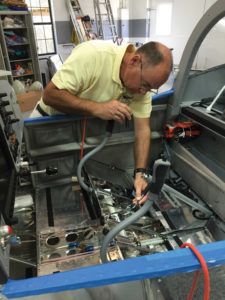 I know you have all been waiting for the second part of my pre-buy article so you can run out and perform your own inspections. Based on the example of a customer who brought his RV-10 to me for a panel upgrade, I hope you will still seek out experience to help you. In this case, the customer had paid for a pre-buy and was told the wiring was fine. I removed solid copper Romex house wiring with screw splices in multiple places and ended up rewiring the entire aircraft! So, hopefully you’ve been patient with your purchase since last month and we can continue our education.
I know you have all been waiting for the second part of my pre-buy article so you can run out and perform your own inspections. Based on the example of a customer who brought his RV-10 to me for a panel upgrade, I hope you will still seek out experience to help you. In this case, the customer had paid for a pre-buy and was told the wiring was fine. I removed solid copper Romex house wiring with screw splices in multiple places and ended up rewiring the entire aircraft! So, hopefully you’ve been patient with your purchase since last month and we can continue our education.
Finishing the Airframe Inspection
Continuing where we left off, the forward tank attach fittings on the Van’s series are another area that requires some attention, as they must be built to provide both some measure of safety in the event of an accident as well as security from movement during normal operations. This is accomplished by a slot in the physical attachment, along with the use of drilled-head bolts tightened into a nut plate and then safety-wired. Depending on the vintage of the aircraft, some have slots cut by the builder into fabricated aluminum attachments, and the newer ones have metal pre-stamped parts with the slot already cut. One aircraft made a strong “pop” right at takeoff (yes, very unnerving) until we discovered the forward attach fittings were loose. We were able to duplicate it on the ground.
Don’t forget to take the time to either remove the wheelpants or use a bright flashlight to look for cracks in the brackets.
Speaking of fuel tanks, many builders forget to label the caps with the type and amount of fuel.
The last things to closely inspect on the airframe are the landing gear attach points. In the case of a retractable-gear airplane, a retraction test on jacks is a definite requirement.
The flap actuator seen here, and used on many varieties of aircraft for flap and trim actuation, requires safety wire between the housing and the bolt in case the locknut should come loose.
Van’s has issued a number of service bulletins pertinent to the landing gear on various models, and it is wise to pay attention, especially if the aircraft has been routinely operated off of grass and at high gross weights, both of which can induce cracking on the engine mount weldments. A bright flashlight is our friend here.
On aircraft with bungee-cord shocks, pay attention to the age of them, as they are usually life-limited.
Firewall Forward
Once I am satisfied we have a sound airframe, it is time to move onto the engine compartment. This is the area where the builder usually receives the least guidance from the kit provider. Many do not even know where to look for service bulletin or airworthiness directive applicability to their engine. A fair number of them do not understand that there is an oil screen on the engine, along with a fuel inlet screen on carburetors and fuel servos, that need to be checked and cleaned regularly.
Look closely and you will see a very common crack on the rear baffling that is used to support this oil cooler.
I like to understand the history of the engine before I even start looking at anything, and also inquire as to whether or not it has been on an oil analysis program, especially for an aircraft that is infrequently flown. The worst-case installation I inspected had an engine that had been removed from another aircraft and had not been run in at least 20 years, and the hoses were approximately the same vintage. This engine was installed on a high-performance Lancair aircraft, with the planned initial test flight on a 3000-foot runway. I politely persuaded the builder that it was really a risky endeavor, and it might be wiser to have the engine fully inspected or torn down prior to the first flight.
The forward tank attach actually moves, much like the rear spar, and calls for a drilled-head bolt and safety wire.
By the way, some safety advice here: Be sure to verify the ignition systems are turned off and ask when the last grounding check was performed. If unsure, assume the ignitions are hot and be very careful around the propeller arc until the spark plugs have been removed. Ask if the fuel system has been modified in any way and if it has been flow checked to exceed 150% of takeoff power.
Many builders are surprised to learn that the rear spars actually have some movement on them due to flight loads and require a castellated nut and cotter key.
Looking for Clues
Sometimes it is fun to play Dick Tracy. On one RV-10 with a nicely painted engine, I noticed that one of the bottom spark plugs was a different manufacturer than the other five. By itself this shouldn’t be a problem. Someone could have dropped a plug, and this was the available replacement. But I had to ask. The owner feigned ignorance, but upon later inspection of the logbooks, I found an entry that reflected a cylinder replacement due to damage from a hangar collapse! Interestingly enough, there weren’t any details as to cylinder break in. On the same aircraft I noticed the scat tube to the firewall cabin heat box was actually touching an unprotected area of the main fuel line. I asked if they noted any anomalies of fuel pressure during flight or ground operations, especially since they were based at an airport with an elevation of 6000 feet. Not unexpectedly, they were experiencing vapor lock unless the electric fuel pump was left on. I showed them the likely cause and how to rectify it.
A thorough inspection of the engine compartment can yield clues as to abnormal operating temps. Hotter than normal temps can usually be noticed by brittle hoses, especially the Lycoming intake hoses since they are so close to the exhaust systems. Intake gaskets can also become brittle and leak. Telltale signs are usually a blue fuel stain at the top of the intake tubes and high EGTs when the throttle is reduced for landing. The gaskets are fairly easy to replace, and I’ve had more luck with longevity using the red Superior gaskets as opposed to the original Lycoming black ones.
Engine Controls, Baffles, Seals, and Exhaust
A surprising number of aircraft I have inspected have less than full movement of the engine controls, with the throttle and the mixture being the highest offenders. Most of the arms on the fuel servos and/or carburetors can be drilled with a new hole to allow complete movement from stop to stop. On one particular RV-8 the owner was telling us how fast it accelerated at takeoff, and how he “really had to hold on.” I showed him he had at best 2/3 of full throttle movement on the fuel servo. This was after flying 240 hours and four years, so it was missed on multiple condition inspections. I couldn’t help but wonder if the cylinders were properly broken in, but I did tell him to expect even more acceleration on the next takeoff!
High EGTs at idle and rough idling engines can be caused by leaky intake gaskets or, as in this case, a missing bolt.
The baffles and baffle seals need to be inspected with careful attention paid in a few areas. The baffles must be sealed to the engine (high temp RTV works well here), they must form a tight seal to the upper cowling, they should be free to move between the cylinders, and they must be inspected thoroughly for cracking if they are supporting any weight such as an oil cooler. Attaching an oil cooler to the rear of the last cylinder is a common practice, but I don’t like it. It invariably will lead to cracking of the baffling and oil cooler supports. You will find all kinds of information on various forums and boards on how to add cross-members to the engine in order to support the cooler, but if you’ve ever seen some high-speed photography of cylinder movement while the engine is running you will realize the futility. Besides, I don’t really think it is good to be tying the cooler to other parts of the engine that are not moving, such as the crankcase. Picture a wet dog shaking water off. Get the idea? On the other hand, oil coolers mounted on firewalls rarely have any cracking problems. Don’t forget to inspect the upper and lower engine cowlings. Check the top cowling for signs of baffle rubbing. It will not only eventually rub through the cowling, but it is a good source of engine vibration transference to the airframe. The lower cowling, if not properly protected by heat shielding and some form of epoxy paint, will usually show signs of heat and oil damage.
This hot air duct is way too close to the unprotected part of the fuel line and, in fact, was causing vapor lock for the owners unless the electric fuel pump was left on. Better routing or fully covering the fuel line with firesleeve should help.
Exhaust systems need to be checked for proper mounting and to ensure there are no cracks, especially in welds or under heat muffs. Regular application of mouse milk on all exhaust joints is a really great preventative measure, and I apply it anytime I have the cowling off on my own aircraft. Be sure to check the exhaust nuts and gaskets at the cylinder attach points. Magnetos should be checked for proper timing and in the case of Slick magnetos, compliance with the 500-hour service bulletin.
Alternator and Engine Ground
The alternator is another item that requires some attention. Just as the engine has a very big job to do, so does the alternator. It must be capable of supplying ample power to recharge a battery after starting the engine and then continue to carry the full electrical load of the aircraft. Today’s all-glass cockpits can require steady state 25-30 amps during the daytime and rise to 40-50 amps at night with the pitot heat activated and lights illuminated. It is important to have the proper size wire with very secure connections, along with an engine ground of the same size or larger than the starter wire. On one very nicely equipped RV-10, there was a 14 AWG wire being used as the main feed from the alternator. It was not only improperly sized, but also a potential fire hazard, as it was attached to a 60-amp alternator breaker. Clearly, the wire would have melted before the breaker could have activated.
Alternator wires should be adequate to supply the full load from the alternator. Normally an 8 AWG or 6 AWG wire will work—definitely not a 14 AWG as discovered here.
Also check the alternator belt for proper tension and any signs of wear, and the pulley for alignment with the flywheel.
Many builders forget to attach a ground wire to the engine, assuming that bolting the engine mount to the firewall takes care of that. Little do they realize that the rubber engine mounts, which help to isolate the airframe from engine vibrations, also electrically isolate the engine. Alternators will not work without a good ground, and an improperly grounded engine can also cause the instrument senders to be very inaccurate. Bad or improper grounds are usually first noticed by poor cranking during starting, the initial reaction being that the battery must be bad. The engine should be grounded to the firewall via one or more flexible cables.
Spark Plugs and Prop
Upon removing the spark plugs for a compression check, perform the usual inspection and look for worn, oily, or lead-fouled plugs. They can be indicators of improper operation such as ground leaning, and other problems such as poor sealing piston rings. I always perform the first compression test on a cold engine, as engines that are flown regularly and properly cared for will usually have compressions in the 70s. Sticky or leaking valves and rings are easier to find on a cold engine. If anything is out of the ordinary, I will then run the engine to see if the problem clears itself. If not, further investigation is warranted, and in the case of a sticking valve or continued low compression, follow-up might be immediately required.
Here is a real example of a low compression test that resulted from a sticking valve. Lots of air could be heard coming out of the exhaust pipe.
Don’t forget to check the propeller and spinner for proper mounting (regular seasonal torquing of wooden propellers is especially important), leading edge damage, and proper lubrication intervals for certain constant-speed propellers. If the assembly has been dynamically balanced, make sure the weights are still attached. The proper size and location of them should be found in the aircraft/propeller logbook. Constant-speed propellers also have a recommended TBO, and it should be checked. Sometimes it is necessary to remove the spinner to check for proper safety wire. Speaking of safety wire, there are lots of places in the engine compartment that need safety wire, and often it is missing.
Removal of the spinner disclosed this disaster waiting to happen. The forward bulkhead was severely deformed due to over-torquing of the propeller bolts on a wooden prop.
On aircraft with Rotax engines there are some inspections required for the gearbox that should be checked and recorded, and there have been numerous service bulletins regarding carb floats and fuel pumps that require compliance.
Avionics and Controls
Now it’s time to look at the avionics. While current databases aren’t actually required, it is another indicator as to whether the airplane really is flown regularly. I like to take my Michel avionics tester to pre-buys. It enables me to verify proper operation of any VOR/ILS, audio markers, com radios, and intercoms. In one case I discovered very weak volume on the com 1 audio, which was caused by a ground short on the wire to the audio panel. An improperly assembled back plate connector on the rear of the unit was the culprit.
Ever wonder why some of those engine sensors are intermittent? Here’s a good example of unsupported wiring that will eventually lead to failures.
Once in the cockpit, a thorough check, much like what is performed during a preflight runup, can highlight any problems. A potential safety area I often see in amateur-built airplanes pertains to control movement. Flight controls need to move throughout their entire range of motion without interference. I’ve seen many control sticks, especially on RV-10s, that will activate switches when moved to the full-forward position. I often wonder who performed the initial airworthiness inspection, as control stick interference should be disqualifying.
All controls and switches should be appropriately labeled. Imagine your passenger pulling this knob back just as you start your takeoff climb—yes, it was connected to the throttle.
Here’s an example of an unlabeled button potentially having serious consequences—the green button on the stick grip was the starter button.
Another problem area pertains to controls, switches, and circuit breakers that aren’t labeled. The worst one had an unlabeled starter button on the control stick. I did manage to convince the new owner to remove it before a propeller inadvertently struck someone. I managed to accidentally bump it twice myself while doing cockpit checks!
The control sticks should never have interference with anything in the cockpit. This one should never have received an airworthiness certificate in this condition.
Paperwork
From the cockpit you can begin the final stages of the inspection, and that is the paperwork. Just as in the certified world, the airworthiness certificate should be visible, and the registration card should be on board and current, as well as the weight and balance. The word “Experimental” should be visible at the entry to the cockpit, and the operating limitations should be on board as well. Too many non-builders are unaware of the requirement for the operating limitations to be in the aircraft, and others claim they have never seen them or don’t remember where they are. I point out to them that the airworthiness certificate is not valid without the operating limitations. Far too many new builders find them in their original paperwork folder instead of in the airplane. A new set can usually be acquired from the FAA in Oklahoma City if needed. Don’t forget the passenger warning label required in view of the passengers.
Next are the logbook inspections. I want to see that Phase I was appropriately signed off (the proper wording is in the aircraft operating limitations), and I want to know who did the flight testing and what exactly was done. I inspected one aircraft that had been flying over seven years across three owners and never had Phase I been signed off! There have been times when I really question the thoroughness of the Phase I testing, especially including loading at different weights and CGs. Some builders have figured out that it is easier to copy VX and VY from other internet pilot operating handbooks, rather than take the time to correctly determine them for their specific aircraft.
While in the logbooks, other entries should include the required transponder and static checks, a check for completion of any applicable service bulletins or ADs, and any notated repairs from damage. Also, check for any major changes that perhaps should have required the aircraft to go back into Phase I. As an example, the requirement to notify the FSDO when changing from a fixed-pitch propeller to a constant-speed propeller is one that is often overlooked.
Flight Test
Once I’ve determined that the aircraft is in a safe, legal, and airworthy condition, it is time for a flight test. I like to watch the owner operate it as it gives me real insight as to the owner’s confidence with the aircraft. I can also spend more time focusing on the engine and flight instrumentation to verify proper operation. Engines should run within normal operating temps as per the manufacturer of the engine, so it is a good idea to familiarize yourself with those specifications prior to the flight. Engines that reach maximum operating temps within a few thousand feet of the ground probably do not stand a good chance of reaching TBO. Flight controls and trim should be approximately neutral in cruise flight depending upon CG and loading, and there should be no required adverse control inputs required when flaps are deployed. One RV-10 that had flown for over 80 hours required so much right rudder pressure in cruise flight that my leg was actually cramping after 20 minutes. I eventually determined that the cap on the vertical stabilizer was offset 3/8 inch and was acting as a fixed trim tab. Removal and replacement with proper alignment fixed the problem.
Listen for changing engine/prop vibrations at various rpm, and verify accuracy of the aircraft tachometer with an optical tachometer from the cockpit. This is especially important on aircraft equipped with propellers that have restricted rpm ranges. Don’t forget to check the radios for clarity and functionality. I like to turn the radio squelch off to check for any ignition noise. On well-equipped airplanes I will verify that an autopilot-coupled approach really does work as expected.
So there you have it. By following this guide to purchasing an Amateur-Built aircraft, you should feel confident that there shouldn’t be any major surprises soon after you bring it home.

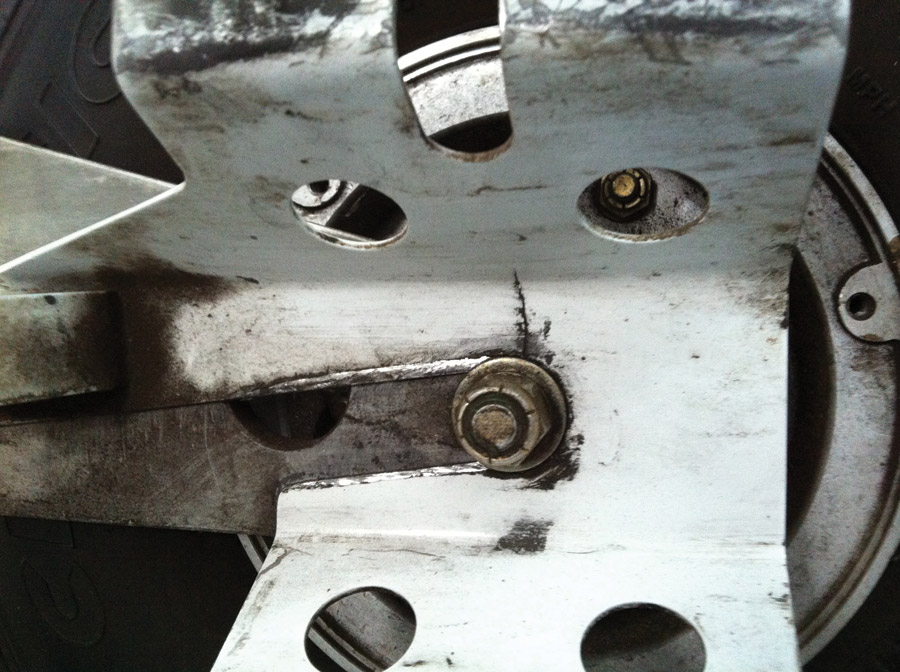
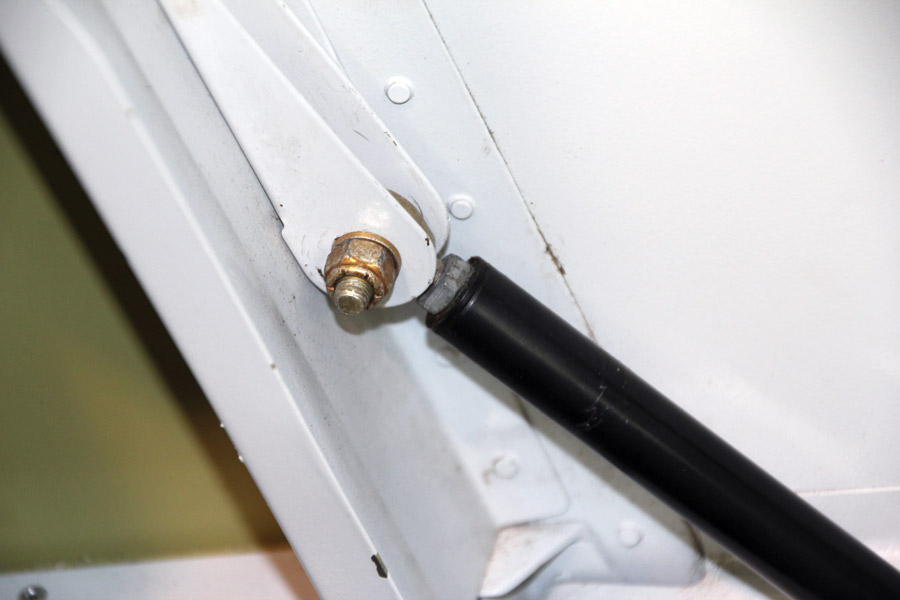
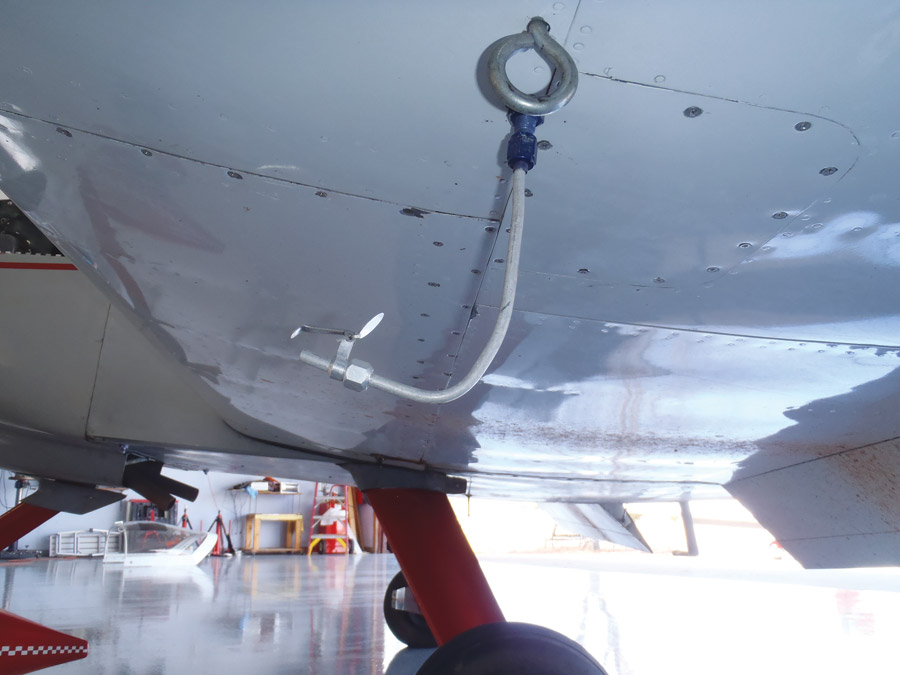
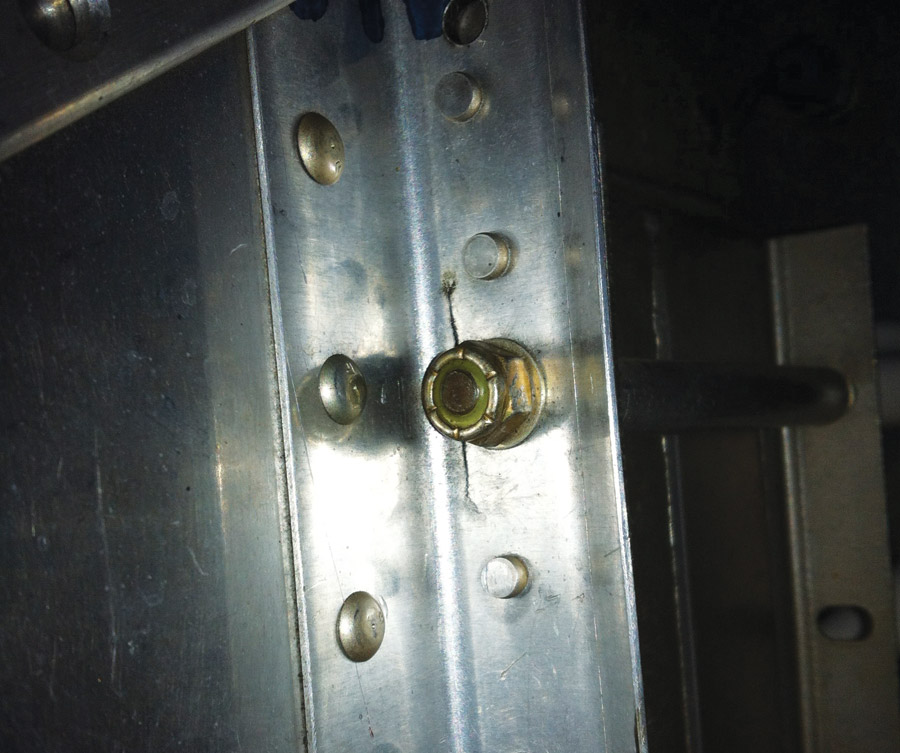
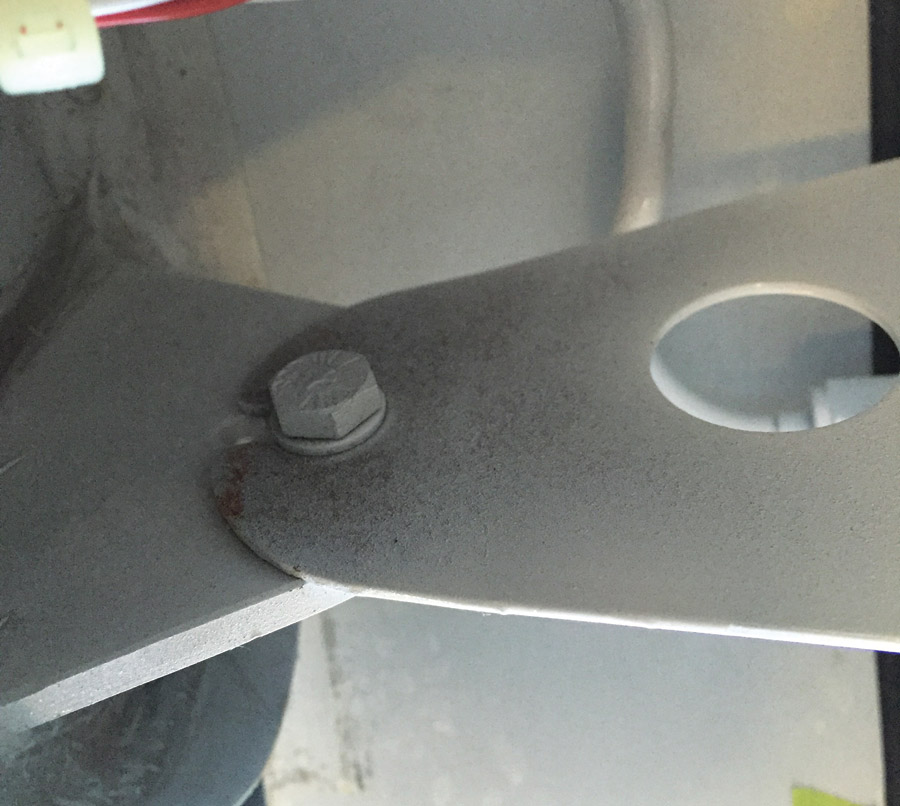


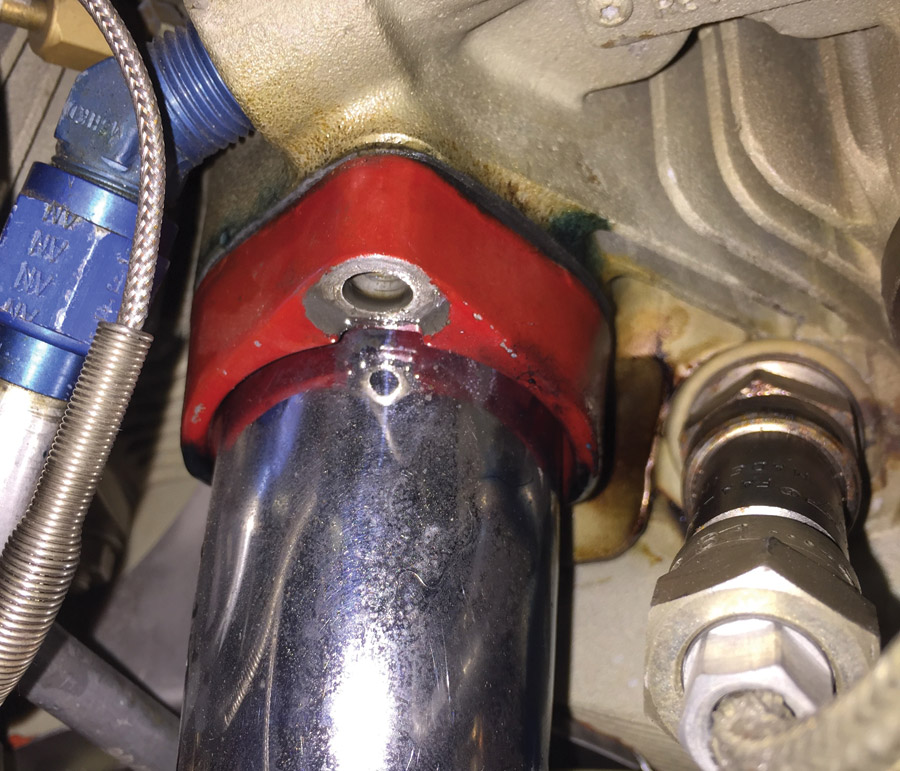
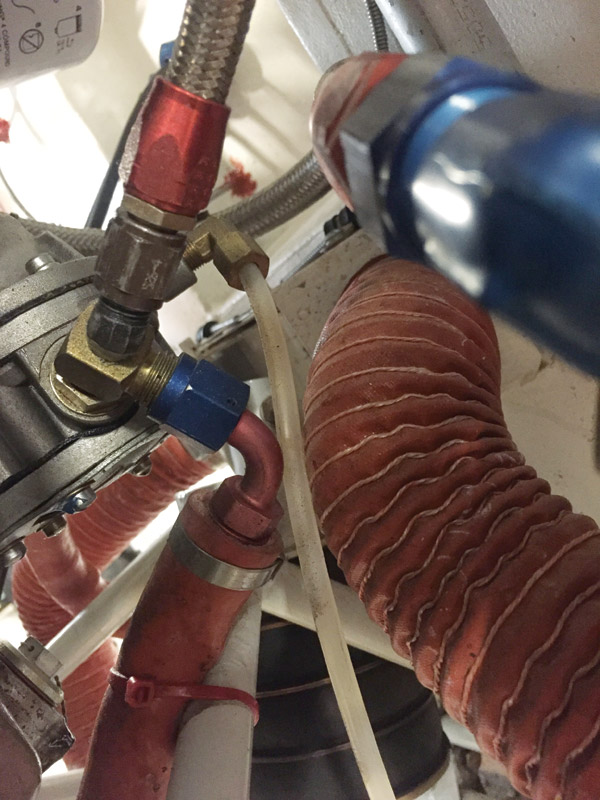


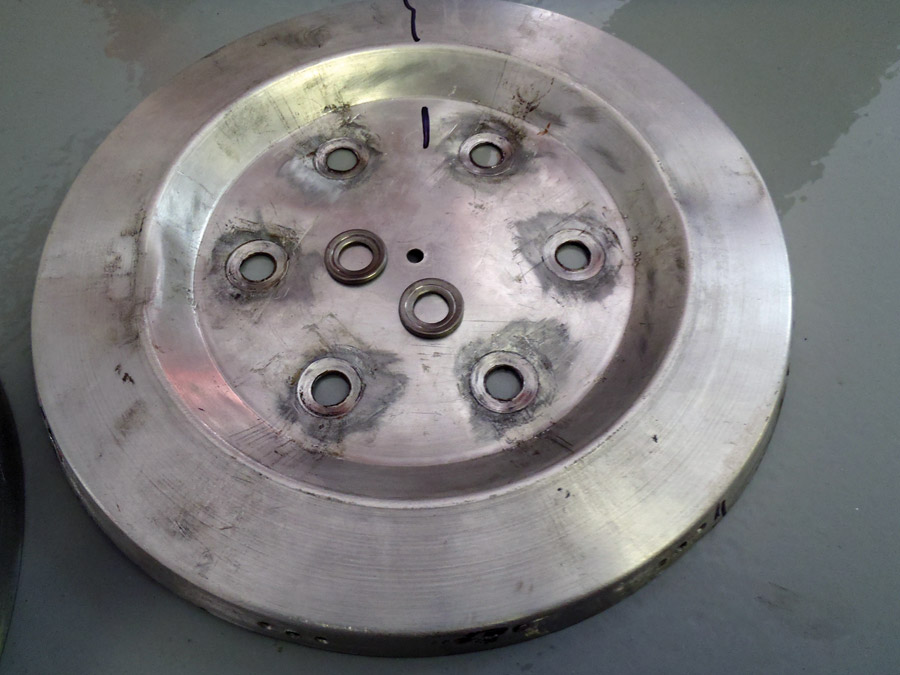
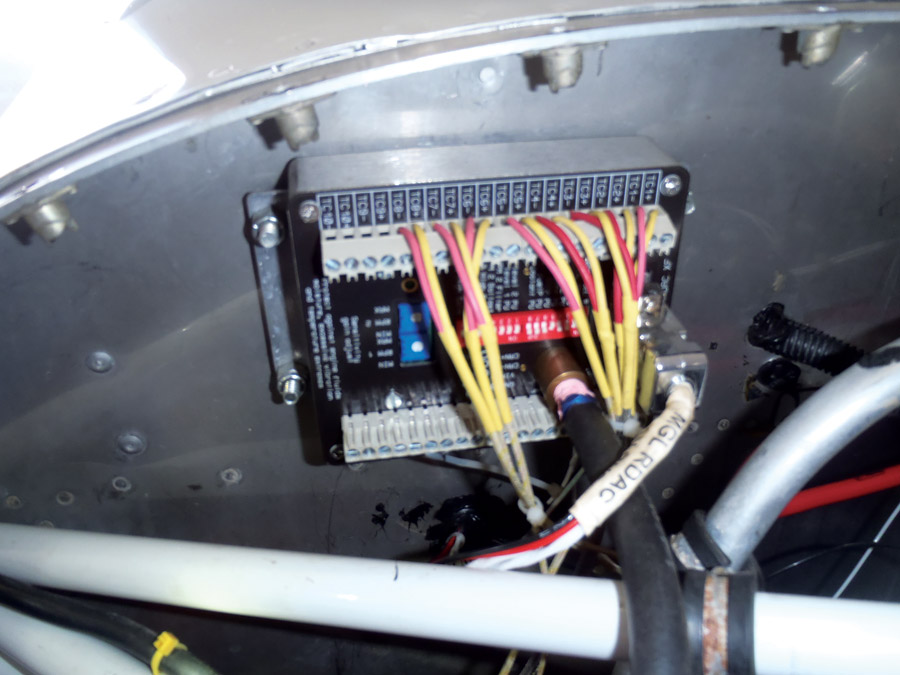
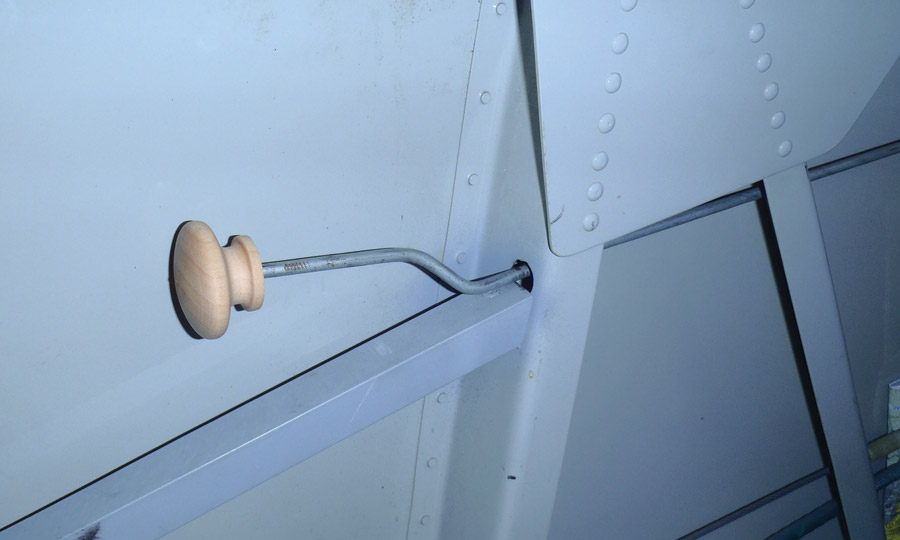
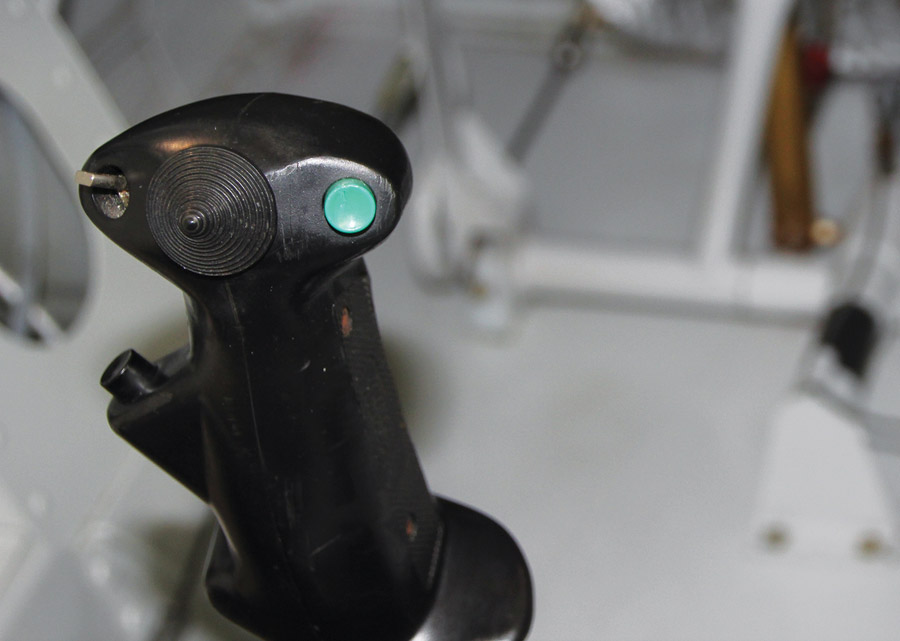
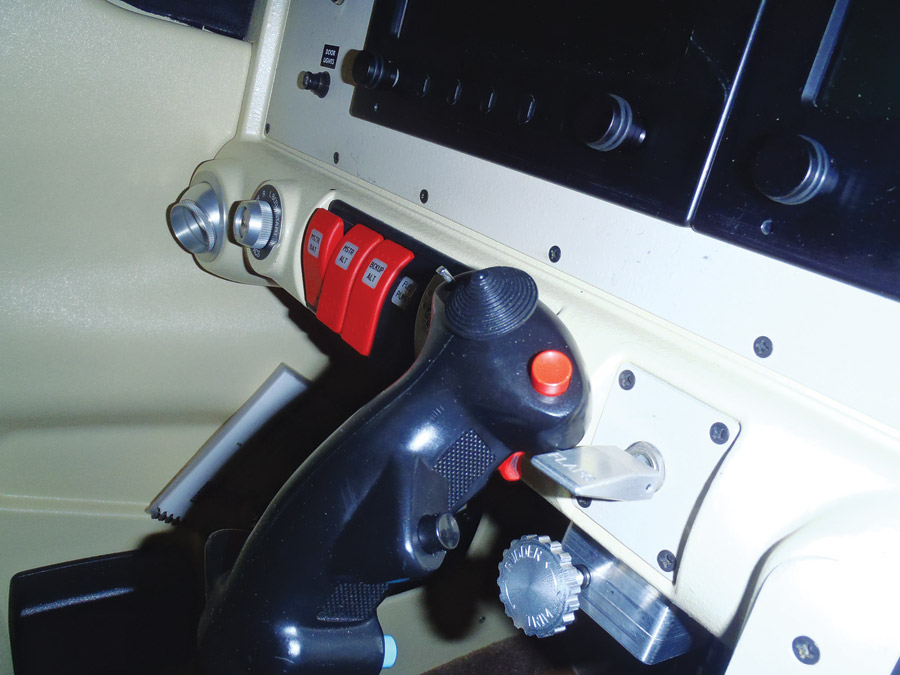
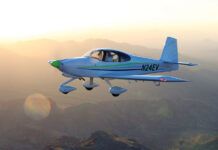
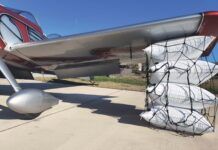
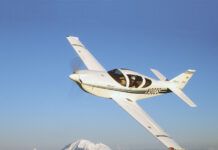


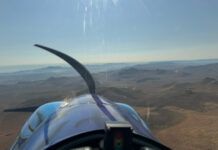

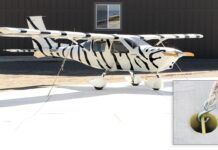
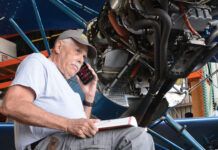

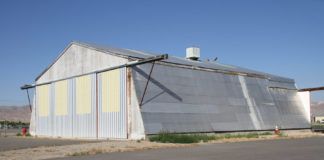
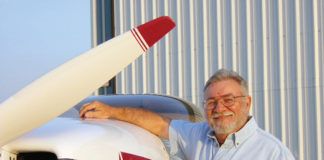
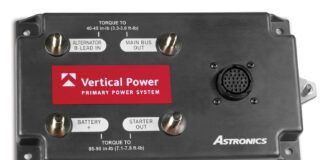
Good on ya noting 500 hr inspections for Slick mags, but please realize it is important for all brands and models of magnetos to have 500 hour inspections.
Agree 100%! This is a really old column, and was focused primarily on RV’s. From what I have seen, the majority of them have Slick mags. Every once in a while we see a Bendix mag, and treat it the same way. 🙂
Vic